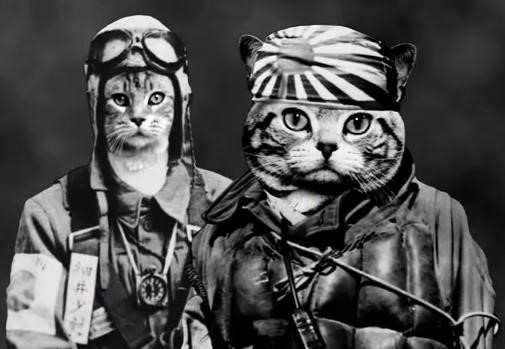The British National Archives have published documentation revealing details into possibly the most loveable spies their forces ever encountered in WWI. In 1915, three suspected enemy agents were seen patrolling British trenches, and officers immediately issued command to have the suspects apprehended. The offenders? One dog and two cats.
The report, while comedic, is not completely without merit. Animals have been used as trained messengers for centuries, and the British suspected that the dog and cats were being used by German spies in much the same capacity. The war had reached an interesting point when this happened. In the same documentation that details the nefarious cats, a British-made sign is discussed which poked fun at the Germans for having surrendered part of their occupation in Africa.
Both sides were experimenting with a unique brand of ingenuity in these times. The sign the British had posted about the German surrender in Africa was not unlike a kite flown by German soldiers to brag that they had more rations than the British, and could therefore stay in the trenches for longer if need be. Given the British “Chinese attack”—use of wooden soldiers to draw German fire—around the same time as these incidents, it stands to reason that if the cats and the dog were in fact agents of the German army, they may have been intended not to relay messages, but simply to occupy British time as their officers attempted to capture the animal spies.
These instances are but a few of the interesting accounts that have come to light in the wake of the WWI centenary, as more and more historic documentation is becoming available to the public. While there is some insight into the more well-known innovations of the First World War, such as mustard gas, tanks, and flamethrowers, there have also been many reveals as to the budding military stratagems of the time. These documents cover the length of the war in its entirety, and in so doing detail the immense and tragic downfall of the South African Brigades at Somme, the entry into the war by the Indian Cavalry in 1914, and many other important events that helped decide the outcome of the war, The Telegraph reports.
While all of these more documented events are important, the story of the cats and the dog provide a deeper look into the overall fear that pervaded the West during the First World War. Because there were so many innovations in strategy and technology, no one could rely on former knowledge to tell them what the enemy was going to do next. If there was even a remote chance that the animals could have been spies, the British had to take it seriously. In a time of brutal innovation, even the seemingly smallest of chances are too large to take.
//
